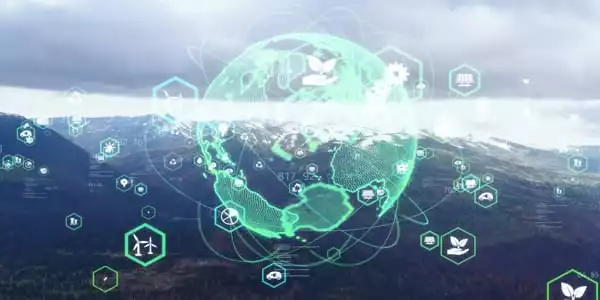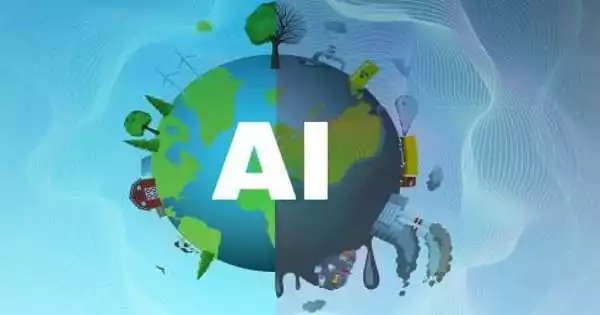As climate change exacerbates the devastation caused by storms, wildfires, and droughts, artificial intelligence (AI) and digital tools are increasingly being viewed as a means of predicting and mitigating their effects. AI may be useful in the fight against climate change. AI applications could aid in the design of more energy-efficient buildings, the improvement of power storage, and the optimization of renewable energy deployment by feeding solar and wind power into the electricity grid as needed.
Artificial intelligence is being developed by researchers to assess climate change tipping points. The deep learning algorithm could serve as an early warning system in the event of catastrophic climate change. Chris Bauch, an applied mathematics professor at the University of Waterloo, is a co-author of a recent research paper that reports on the new deep-learning algorithm’s results. Bauch explained that the research focuses on the thresholds beyond which rapid or irreversible change occurs in a system.
“We discovered that the new algorithm could not only predict tipping points more accurately than existing approaches, but it could also provide information about what type of state lies beyond the tipping point,” Bauch explained. “Many of these tipping points are undesirable, and we’d like to avoid them if at all possible.”
Artificial intelligence is being developed by researchers to assess climate change tipping points. The deep learning algorithm could serve as an early warning system in the event of catastrophic climate change.
Chris Bauch
Melting Arctic permafrost, which could release massive amounts of methane and drive further rapid warming; breakdown of oceanic current systems, which could lead to almost immediate changes in weather patterns; or ice sheet disintegration, which could lead to rapid sea-level change are some of the tipping points frequently associated with runaway climate change.
According to the researchers, the AI was programmed to learn not just about one type of tipping point, but about the characteristics of tipping points in general.
The approach’s strength comes from combining AI and mathematical theories of tipping points, which accomplishes more than either method could on its own. The researchers trained the AI on a “universe of possible tipping points” that included 500,000 models before testing it on specific real-world tipping points in various systems, including historical climate core samples.

“Our improved method could raise red flags when we’re approaching a dangerous tipping point,” said Timothy Lenton, director of the University of Exeter’s Global Systems Institute and one of the study’s co-authors. “Improving early warning of climate tipping points could help societies adapt and reduce their vulnerability to what is coming, even if it is unavoidable.”
Deep learning is making huge strides in pattern recognition and classification, with researchers converting tipping-point detection into a pattern-recognition problem for the first time. This is done in order to detect the patterns that occur prior to a tipping point and train a machine-learning algorithm to predict whether a tipping point will occur.
“People are familiar with tipping points in climate systems, but there are tipping points in ecology, epidemiology, and even stock markets,” said Thomas Bury, a postdoctoral researcher at McGill University and one of the paper’s co-authors. “What we’ve discovered is that AI is very good at detecting features of tipping points that are shared by a wide range of complex systems.”
The new deep learning algorithm is a “game-changer for the ability to anticipate big shifts, including those associated with climate change,” according to Madhur Anand, director of the Guelph Institute for Environmental Research and another project researcher.
Now that their AI has learned how tipping points work, the team is working on the next stage, which is to feed it data on current climate change trends. Anand, on the other hand, issued a warning about the dangers of such knowledge.
“It definitely gives us an advantage,” she said. “Of course, what we do with this knowledge is entirely up to humanity. I can only hope that these new findings will result in equitable and positive change.”
The technology is already being used in Japan to send out natural disaster alerts, monitor deforestation in the Amazon, and design greener smart cities in China. AI applications could also aid in the design of more energy-efficient buildings, the improvement of power storage, and the optimization of renewable energy deployment by feeding solar and wind power into the electricity grid as needed.
On a smaller scale, it could assist households in reducing their energy consumption by automatically turning off lights that are not in use or sending power from electric vehicles back into the grid to meet expected demand.















